General Insurance Blogs, Articles & Updates by - Magma HDI
Have us call you
- RENEW YOUR POLICY
- BUY NEW POLICY

World Cancer Day: Ten self-help tips to quit smoking
Tobacco use is both a physical and mental addiction. This deadly habit has affected a vast population worldwide. Nowadays, smoking and chewing tobacco observe no age as the majority of the youth are trapped under the negative influence of excessive tobacco use, which becomes irresistible and difficult to quit.
Nicotine delivers a transient high. To quit smoking, you must prohibit both the addiction and the associated behaviours and routines. With the correct assistance and quitting strategy, smokers can overcome their habit even if they've tried and failed previously.
We're all aware of the harm caused by smoking and how it isn't easy to quit. When you stop getting your tobacco dose regularly, your body goes through physical withdrawal symptoms.
Following are ten tips that will guide you to quit smoking in no time.
1. Make a quitting strategy:
Following the "no puff" criterion is always beneficial. Consider challenging situations and prepare your moves. Promise yourself not to smoke and stick to this until the cravings pass.
2. Observe when you require a smoke:
Identify the times when your cravings are at peak and avoid those situations. Instead, engage yourself during this time to keep you from giving in.
3. Get going:
Exercising is a known way to reduce addiction. For example, a simple 5-minute walk or stretch helps your brain to release anti-craving hormones that further reduces cravings.
4. Maintaining proper hydration:
It's an excellent idea to keep track of what you drink, just as you do with what you eat. While it is necessary to drink enough water, certain beverages are not suggested since they encourage smoking.
5. Apply relaxing methods:
Relaxation methods, such as deep breathing exercises, muscular relaxation, yoga, massage, listening to calming music, or visualisation, may help take the edge off.
6. Keep your mouth engaged:
Whenever you feel the urge to smoke a cigarette, munch on some snacks. And remember, you don't always have to snack on junk food; snacks can be healthy too. You can even eat chewing gum to keep your mouth engaged and avoid cravings.
7. Think about your diet:
Some meals, especially meat, make cigarettes more enjoyable. Others, such as cheese, fruit, and vegetables, make the smoke less desirable. So rather than your typical steak or burger, try having veggies instead.
8. Get some help in quitting:
If you have people around you who wish to quit smoking, offer them to stop together. Your local ‘quit smoking club’ may also assist you. With professional guidance and advice, you're four times more likely to succeed in quitting.
9. Keep a positive attitude:
You may have tried and failed to stop smoking in the past, but don't let that discourage you. Instead, consider what your history has taught you and how you want to do things differently this time.
10. Reassure yourself of the advantages:
Remember the benefits of quitting, such as better health and relations, healthy resistance mechanisms, etc. Also, keep in mind that every time you fight a cigarette urge, you're one step closer to becoming smoke-free.
It's never too late to undo something. So, let this World Cancer Day motivate you to quit smoking and walk towards healthy living. Smoking might give you pleasure for a couple of minutes, but it takes away more than you realise. Not to mention the severe illness and ailments that come with it. So, make the wise decision to just give it up.
Besides quitting smoking, buying health insurance can be crucial to living a healthy and long life. Take account and responsibility for your health, and don't hide any information from your insurance company regarding your smoking or drinking habits. Be true to yourself and give all accurate details to get the best benefits of your health insurance at the time of need.
To buy health insurance, click HERE.
Disclaimer: The information provided above is for illustrative purposes only. To get more details, please refer to policy wordings and prospectus before purchasing a policy.
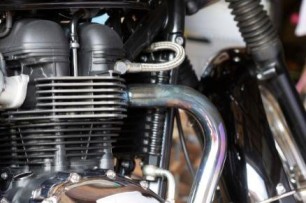
Let's understand why bikes do not have diesel engines
Diesel engines are commonly used in the automobile sector. Cars, trucks and other vehicles rely heavily on them. On the other hand, diesel-powered bikes are rarely seen. Have you ever wondered why? It's not like the industry hasn't seen diesel-powered motorcycles before. In India, only one diesel-powered bike has been introduced. But that is all.
If bikes can run on gas and petrol, why not diesel? With the petrol prices touching new highs every month, it only makes sense to have bikes with a diesel engine, right?
Although the idea is not bizarre, it isn't easy to execute. Keep reading to know why manufacturers do not use diesel engines in bikes. We have mentioned five reasons that will help you understand better.
1. Compression ratio:
The compression ratio of a diesel engine is 24:1, which is higher than a petrol engine's compression ratio of 11:1. The diesel engine must be bigger and heavier to accommodate such a high compression ratio. As a result, it is heavier than a gasoline engine, making it unsuitable for a small vehicle such as a motorbike.
The diesel-powered engine creates greater vibration and noise than the petrol-powered engine due to the higher compression ratio. A bike will not be able to sustain such high vibrations and noise levels.
2. Heating issues:
As compared to petrol engines, diesel-powered engines generate more heat. When diesel burns, it creates a lot of heat, harming the cylinder walls and other engine components like pistons and valves.
To lower the heat, manufacturers will need a larger surface area and a more effective cooling system which is inconvenient. On the other hand, petrol engines produce less energy per gallon. As a result, they stay significantly cooler and are less prone to harm the engine.
3. Price and Size:
The addition of a turbo compressor to push extra air into the cylinder increases the expense and size of a diesel engine. Moreover, injector technology is utilised to pump fuel into the combustion chamber, which is more costly than petrol engine spark plug technology.
A diesel engine is much larger than a petrol engine, and it requires a lot of force to start, making it unsuitable for motorcycles.
4. Greater torque but low speed:
Diesel engines generate greater torque. However, they have lower revolutions per minute (RPM) when compared to a petrol engine. Diesel isn't regarded as an ideal fuel since bikers' high-performance bikes demand greater RPMs.
5. Not so eco-friendly:
The amount of carbon dioxide produced by a diesel engine is around 13% more per gallon than a petrol-powered engine. Its usage is harmful to the environment, observing the average number of motorcycles used nationwide. This figure can be a significant threat to India's climate.
There you have it, all the key reasons why manufacturers won't produce diesel-powered bikes. Even if we look from a biker's perspective, no biker would want a bulky bike with more cons than pros. Although if the technology evolves in the future, we might have a diesel engine revolution. Until then, stick to your petrol-powered bike and insure it with the best two wheeler insurance in India. You can browse multiple options and choose one with the best premium and benefits.
Click HERE to buy the best two wheeler insurance in India.
Disclaimer: The information provided above is for illustrative purposes only. To get more details, please refer to policy wordings and prospectus before purchasing a policy.
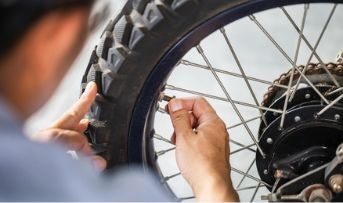
Here are some bike puncture probabilities every rider must be aware of
While bikes are the most commonly preferred mode of personal transport used in all-terrain conditions, easy to manoeuvre, and convenient, their safety is often ignored. The government's strict move to mandate bike insurance makes it evident that the safety and protection of the rider are essential and can’t be compromised.
Besides bike insurance, you can also ensure safety through regular maintenance and preventive measures to avoid mishaps. Punctures are one such risk that you may encounter at any time. They can be frustrating but are unavoidable. Here are some factors riders should be aware of that could lead to a tyre puncture.
1. Old tyres:
As consumables, tyres must be replaced every 5 years or 30,000 to 40,000 kms, based on the riding style and road terrain. If you notice little surface rips, a large tear that may expose the tube, cracks, or other symptoms of wear down, the tyre has to be changed. Since they are your primary point of contact with the road, having new tyres will reduce the probability of having a puncture and improve the overall feel of your vehicle.
2. Sidewall cracks:
The lack of use of the vehicle, the environment, or parking the two-wheeler in direct sunlight can all cause tyre sidewall cracks. They might seem insignificant, but they can cause catastrophic air leaks over time.
3. Pinch flats:
Pinch flats can occur because the tube is forced against the wheel rim and either tear or explode on pumping. The incident occurs due to the hasty insertion of the tube and carelessness. Always partially inflate the tube before fitting it to prevent this from happening.
4. Increased tread wear:
Tyres include grooves known as treads for better traction and grip on the ground. The impression deteriorates due to use, making it difficult to manoeuvre the bike by decreasing traction and lengthening the time taken to brake. A tyre wear indicator is typically an arrow sign that shows the extent of wear and the point at which you should change your bike's tyres.
5. Ignoring tyre inspection:
Small, sharp objects pierce the rubber of the inner tube to cause a puncture. If the item remains lodged in the tyre unnoticed for a long period, it can cause the new inner tube to be punctured. Have a proper tyre inspection before replacing your tube to avoid such issues.
6. Wheel damage or bending:
The alloy wheel or steel wheel may break or bend from the area around the tyre bead if you ride over a large, deep pothole, collide with another vehicle, or have an accident. This may result in an air leak due to a puncture.
7. Improper tyre pressure:
Under-inflated tyres will bend in response to the slightest bump or obstruction, making them vulnerable to pinch flats when the tube can become wedged between the rim and the tyre. You risk hitting a pothole or other impediments with more force if you have too much pressure in your tyre, making it challenging to bend against any object and keep it rigid. Your weight, the breadth of your tyres, and the weather will all affect the proper tyre pressure.
8. Unusual deterioration pattern:
The tyre may show signs of wear and tear. It can be on the shoulder or in the middle of the tyre. Mechanical problems, such as worn-out shock absorbers or a problem with wheel alignment, are to blame. It's essential to replace the tyre if it shows evidence of abnormal wear and tear.
9. Valve stem damage:
The valve stem, located on the inner circle of both tube-type and tubeless tyres, is where you fill the tyres with air. The ability of the tyre to retain air decreases if that valve stem is damaged, whether by corrosion, blockage, or breaking.
Punctures are a constant worry, especially considering bikes' lack of sophisticated safety features. While you cannot prevent punctures, you can keep a look for signs of a possible puncture. We also recommend riders consider purchasing comprehensive bike insurance. This will shield you, your bike, and others from finances worries if your bike suffers severe damage.
Click HERE to purchase the best bike insurance to secure your assets and finances.
Disclaimer: The information provided above is for illustrative purposes only. To get more details, please refer to policy wordings and prospectus before purchasing a policy.
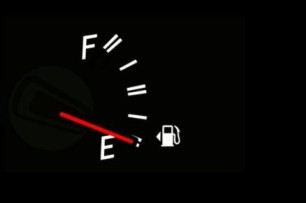
How to improve the fuel efficiency of your car
No matter how much we stress about the rising fuel prices, there isn't much we can do about them. Then how do we ensure we use our vehicle efficiently and stay stress-free about the condition of our car? Moreover, how do we compensate for the fuel prices we pay?
Do you know regular maintenance of your vehicle can save you up to thirty per cent of fuel consumption? And yet, a lot of car owners slack off on taking care of their vehicles. Some don't go for regular servicing, and others use cheap spare parts and end up damaging their car.
This blog is your guide on improving the fuel efficiency of your car. We will discuss various ways to attain maximum efficiency without widening the hole in your pocket created by the increasing petrol and diesel prices.
1. Avoid leaving the vehicle idle:
Leaving your vehicle in an idle state at traffic signals consumes almost a gallon of fuel and increases your carbon footprint by releasing unnecessary carbon dioxide into the air. Instead of leaving your car in an idle state, restart as per your necessity. This saves a lot of fuel and minimises carbon dioxide emissions into the atmosphere.
2. Warm-up:
Slowly and effectively heating your car's engine is a better choice than revving it. Unnecessary pressure will decrease the efficiency of your engine, and it will consume more fuel for power generation. After starting your vehicle, wait for thirty seconds to allow the engine to warm up properly at its own pace.
3. Say no to heavy braking:
Reduce the use of throttle and avoid applying unnecessary heavy brakes. This saves your vehicle from the possibility of wear and tear and decreases fuel wastage by almost thirty per cent, thus improving your car's fuel efficiency.
4. Don't rev your car:
Revving your engine causes wastage of fuel. It flushes down all the oil from the cylinder walls. The absence of oil could worsen the next time you start up your car. This will put pressure on the engine and result in excessive fuel consumption.
5. Multiple errands:
Planning your trip according to your errands can efficiently help you utilise the fuel. You can combine and run multiple errands and reduce the number of trips.
6. Alignment:
Check the alignment of the chassis parts and suspension. If the wheels are bent, or if there are broken springs, the drivetrain drag of your car will increase, resulting in increased fuel consumption. Defective parts and misalignment can also put your safety in danger and amplify the risks of accidents.
That's a wrap on how to improve your car's fuel efficiency. Using these tips, you can ensure maximum and optimum utilisation of the petrol and diesel you put in your vehicle. While fuel efficiency is an essential aspect of owning a car, ensuring your car's security is equally important. Invest in car insurance and protect your vehicle from any unfortunate incidents. To purchase insurance, explore the market, and browse through multiple deals to ensure that you get the best car insurance price in India.
Click HERE to know more about how you can get the best car insurance price in India.
Disclaimer: The information provided above is for illustrative purposes only. To get more details, please refer to policy wordings and prospectus before purchasing a policy.
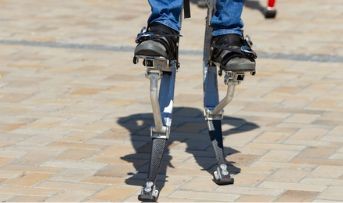
Experience the thrill of powerbocking
In the hustle and bustle of today’s modern world, youngsters are always looking for an adrenaline rush. This rush has made extreme sports increasingly popular in this day and age. Due to India’s wide geographical variety, many of these sports are offered in different corners. From exploring the mesmerising aquatic life and corals in Andaman to parasailing in Goa, these sports can push you physically and psychologically out of your comfort zone.
However, checking the coverage offered by your personal accident insurance policy before engaging in such sports is always recommended. This ensures that your insurer provides compensation in case of accidents while participating in adventure sports.
One such extreme sport that is getting increasingly popular among young Indians is powerbocking. This blog will introduce you to powerbocking and the thrill you’ll crave once you indulge in it!
What is powerbocking?
Powerbocking is an extreme sport where players wear jumping stilts and jump to great heights. Jumping stilts are specialised leg attachments containing springs to hoist the person into the air. Jump stilts are very exciting! They enhance your ability to do tricks and flips and help you take greater strides, which makes you run faster. These stilts are called powerbocks after the creator, Alexander Bock, a German inventor who first named them powerskip.
It is a popular sport in urban cities, and finding a surface on which you can go powerbocking is essential. Balance being one of the critical factors affecting this sport, it should not be done on grass or dirt, as the boots have a small surface area on the ground, which may lead to injury. Thus, jumping stilts should ideally be used on asphalt or cement. Since this can result in injury due to the hard nature of the surface, you should be equipped with a personal accident insurance policy that covers such accidents and injuries for your physical and financial safety.
While they may seem unfamiliar in Indian settings, they were recently used in an Indian sporting event. Different interesting videos on social media have always been creating a buzz regarding this sporting activity. With time, this event is expected to observe growth in India too.
● Benefits of powerbocking:
Powerbocking makes you feel superhuman without the same risks as other extreme sports. They are most suitable for people who want to feel like bionic humans from the future without any of the associated perils. It is an exciting offbeat adventure sport that one should surely try.
● Risks associated:
Despite being a reasonably harmless sport where the most significant injury is usually a knee scrape, some people have suffered severe injuries while seeking the thrill of jumping in these devices. For such misadventures, it is always advisable to take an extreme sports insurance policy or a personal accident insurance policy covering medical costs for such injuries.
● Powerbocking competitions:
When it comes to any sport, the main thrill of it is the competition. They bring out the competitiveness of the best players in the world and are incredibly engaging to see. As this is a niche adventure sport, there are fewer worldwide competitions, and the most famous ones are in France. The Riser Winter Cup, held each year in Lille, France is one of the most sought-after competitions for powerbockers.
Have you ever watched videos of Kangaroos jumping and wished you could jump that high or take such great strides? Then powerbocking is the perfect sport for you. Just make sure to take the proper precautions before undertaking this sport. And the first step to your security begins with purchasing personal accident insurance policy.
Click HERE to know more about personal accident insurance policy.
Disclaimer: The information provided above is for illustrative purposes only. To get more details, please refer to policy wordings and prospectus before purchasing a policy.
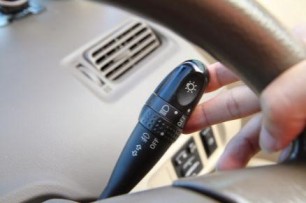
Car Indicators: A comprehensive guide to know more about them
Cars have multiple indicators, all with specific functionalities. These indicators play a significant role in keeping you and your car safe, especially while driving. They exhibit deceleration, assist in showing the vehicle's change in direction and make the car's functionalities accessible. They help avoid collisions with other vehicles, thus protecting you from accidents and damages.
We need to understand car indicators in a better way. Let us discuss car indicators structurally, functionally, and common mistakes that can endanger you.
1. The structure of indicators:
Whether attached at the side, front, or rear of your vehicle, the car indicators on the exterior provide information to other people on the road via signals, thus maintaining a safe distance with other cars and pedestrians. These indicators are responsible for ensuring safety on the road.
Usually, a car's signal light consists of three parts assembled together-bulb holder, housing, and cover lens.
• The housing consists of moulded reflectors.
• The bulb holder places one or more light sources relative to the optical system of the light.
• The cover lens is in charge of the light distribution through patterned structures.
2. The functioning of indicators:
The rear light consists of several functions which work on the same brightness level during the day, fog, or night. But thanks to the Adaptive Signal System, the signal lights in the rear combination lamp can adapt to the weather conditions individually. The light intensity can be varied according to the weather and the visibility conditions.
More LEDs light up with more significant displays. Different braking signals meet their requirements in other ways, such as increased brightness or flash frequency, ensuring convenience.
3. Handling the indicators:
Pulse Width Modulation (PWM) controls the light sources in many vehicles. It has many advantages, one of which is using the same bulbs for different functions. This also increases the service life of the bulbs.
Note: The manufacturer's information and specifications should be strictly complied with while replacing the bulbs in the signal lights. An incorrect bulb replacement can create an issue regarding the light intensity.
4. The faults:
A faulty indicator signal light can be snuffed out before it becomes dangerous. Without a signal, or failing to use your turn signal while turning or changing lanes can cause confusion between you and the other vehicles. It can further lead to severe accidental circumstances.
Improper use of high beams or glare can cause poor visibility of the vehicles coming in your direction, resulting in collisions leading to severe damages. Avoid driving without headlights at night and use high beams only when there is light traffic or absolutely no cars on the road.
Now that we have discussed car indicators in detail, a wise option would be to understand how unprecedented circumstances can endanger your car's safety and efficiency. To further protect your vehicle, you can research multiple insurance options that provide all possible features required by you. And once you finalise, buy motor insurance online to avoid all the outdoors hassle and add value to your valuable possession.
Click HERE to know more about how you can buy motor insurance online
Disclaimer: The information provided above is for illustrative purposes only. To get more details, please refer to policy wordings and prospectus before purchasing a policy.

Know more about the total loss car insurance claim process
Car insurance might include many technical languages that can be difficult to grasp or make sense of. One such concept that might perplex people is "total loss." If you are involved in an unfortunate event where your vehicle sustains significant damage, this is referred to as ‘Total Loss’ in insurance jargon.
This is a tragic situation, and you must follow particular procedures to submit an insurance claim. In case of a total loss, the cost of restoring and repairing your car exceeds 75% of the insured declared value (IDV). Let us learn more about this term, what it means, and some other areas of motor insurance linked to it.
Total loss in car insurance:
When the calculated cost of repairing a damaged vehicle exceeds the car's actual cash worth, the automobile is considered a "total loss." Such a claim differs from other small claims since it requires more work. When an automobile is deemed a total loss by its insurance company, it is referred to as a totalled car.
Total loss can be caused by two means:
• Car getting stolen
• Car getting wrecked beyond repair in an accident
Furthermore, a constructive total loss occurs when the anticipated cost to repair or replace the insured vehicle exceeds its real market worth. Constructive total loss is so severe that it is cheaper and wiser to purchase a new car instead. This is mainly because there is little likelihood of returning the vehicle to its previous condition.
What to do if you suffer a total loss?
You have the option of selling the remaining pieces of your wrecked vehicle to a scrap dealer. Some components are recyclable, while others are not. The scrap trader will separate these pieces and recycle them for other purposes.
The next important step is to cancel your RC certificate at your closest RTO office. It is your responsibility to comply within a 14-day grace time to submit a notification to the RTO office. When you cancel your registration, you provide a guarantee that the same registration will not go to anyone else.
The next move would be to submit a Total Loss claim. When you submit a claim, the insurance provider is only obligated to pay the IDV. If you already have the ‘Return to Invoice add-on’ on your coverage, the motor insurance provider is obligated to pay the entire amount of the car invoice. This add-on allows you to acquire the total value of the vehicle rather than just the insured declared value.
For those who are newly purchasing car insurance, do not sleep on the Return to Invoice add-on. This is something that will ultimately work in your favour. Things are always uncertain when you're on the road, so be responsible and do not travel without car insurance. Take serious responsibility for protecting your possessions and make wise investments in security that will reap you good benefits at the hour of need. Watch out for your car insurance renewal dates and always renew them beforehand.
To get a car insurance renewal, click HERE .
Disclaimer: The information provided above is for illustrative purposes only. To get more details, please refer to policy wordings and prospectus before purchasing a policy.
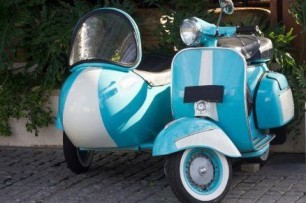
The best tips to ride a two-wheeler with an attached sidecar
Riding a two-wheeler with an attached sidecar is a rarity these days. However, this combination is a classic. Besides giving your two-wheeler a quirky look, attaching a sidecar increases efficiency and enhances the functionalities of your vehicle. But a two-wheeler with an attached sidecar comes with its own challenges.
Adding a sidecar makes your vehicle transition from a two-wheeler to a three-wheeler. So, it would be best to adapt to the dynamics and difficulties of riding a three-wheeler to prevent road accidents and ensure safety.
Let’s discuss the best tips to ride a two-wheeler with an attached sidecar to help you overcome the obstacles you might face:
1. Although it is challenging to drive in a straight path as the wheels are fitted in three odd planes, keep a firm grip on the handlebars and put the required effort to ride in a straight line. You will need to constantly pull the handlebars and manoeuvre them accordingly to avoid any collisions on the road.
2. A bike with an attached sidecar moves differently when turned. In case of a left turn, permit the wheel on the rear end to spin slower than the sidecar wheel as you release the throttle. This will help you control the vehicle better.
In case of a right turn, allow the wheel on the rear end to spin faster than the sidecar’s wheel as you open the throttle. All in all, modulating the throttle will help you achieve better control of your two-wheeler.
3. Your sidecar has brakes. To use the front brake, you need to use the right-hand lever on your bike. If the sidecar has brakes on the rear end, you can use the right foot lever. To stop your motorcycle, you need to apply both brakes. In case of an emergency, apply the front brake.
4. Many sidecars have the provision of a steering wheel and an option to switch to the two-wheel-drive model. But make sure that you only use the two-wheel-drive function in emergencies (for example, if your motorcycle is stuck on a loose or slippery surface). Engaging the two-wheel-drive on a firm surface causes both sidecar’s and bike’s wheels to spin at the same speed, thus creating a risk of disbalancing the vehicle while making a turn.
5. Practice makes you perfect. The same applies when you learn the dynamics of riding a two-wheeler with an attached sidecar. Practising regularly in a safe environment with and without a pillion rider will help you learn efficiently. Take things at your own pace, don’t rush, and see the positive outcomes.
Sidecars ensure convenience and even allow families to spend quality time together. Now that we’ve shared the best tips to ride a two-wheeler with an attached sidecar, it is a wise thought to think about how to keep your two-wheeler safe on the roads. Along with taking good care of your bike, purchasing a bike insurance is your solution to safeguard your bike from unprecedented damages.
Click HERE to know more about bike insurance.
Disclaimer: The information provided above is for illustrative purposes only. To get more details, please refer to policy wordings and prospectus before purchasing a policy.


